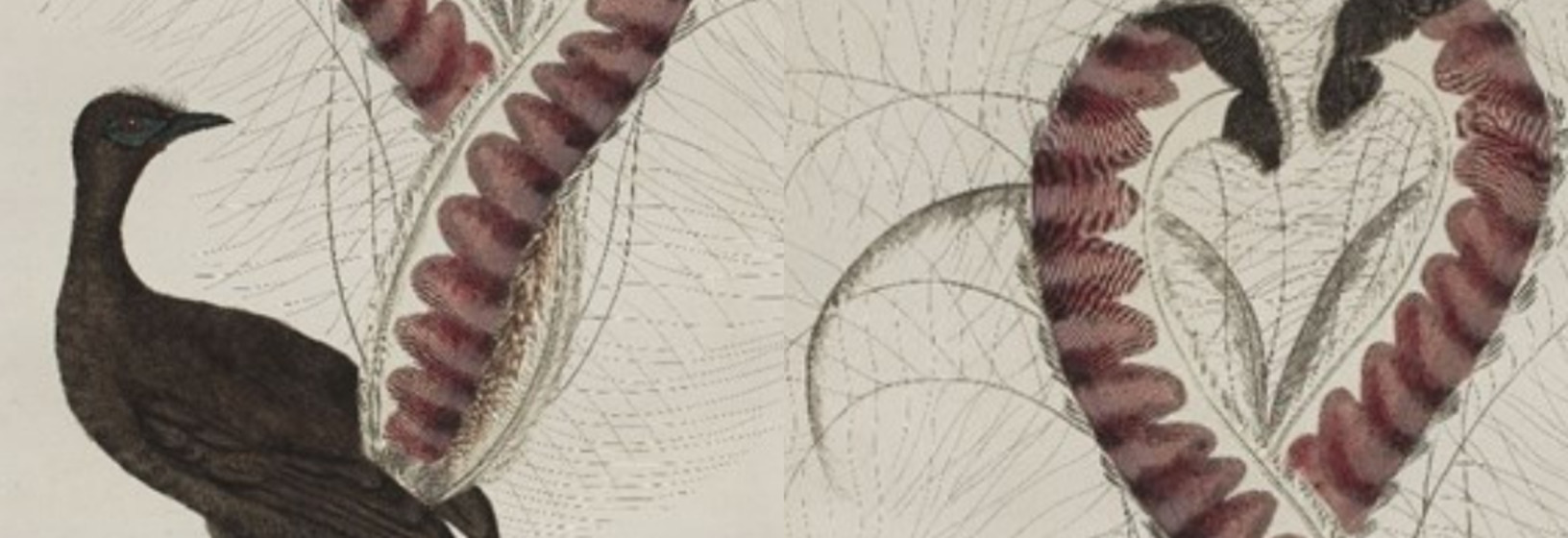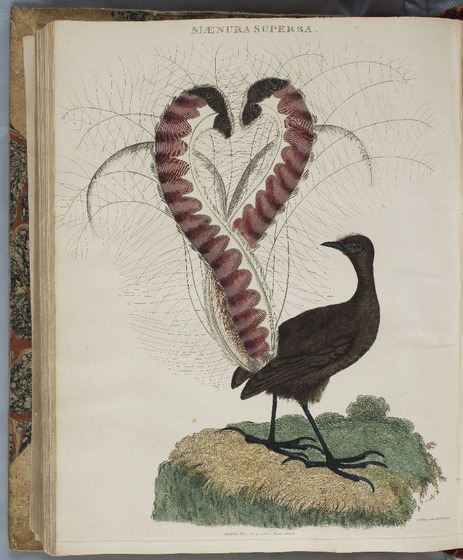The Iconic Lyrebird
Certain birds captured the imagination of Europeans from the moment of their arrival. With its impressive plumage and remarkable knack for mimicry, it’s not difficult to see why the Superb lyrebird, Menura novaehollandiae was a popular choice. English settler David Collins’ 1798 account of the New South Wales colony included an early description accompanied by a beautiful engraving. An illustration of a lyrebird later adorned the cover of Gould’s Birds of Australia.
The introduction of photography in the second half of the 19th century meant that the lyrebird’s distinctive behaviour could be captured with increasing accuracy. The undisputed founder of lyrebird research in Victoria was Tom Tregellas (1864-1938), who spent much of the 1920s and 1930s in a hollowed out log he called ‘Menura’ in Kallista in the Dandenong Ranges making observations.
Tregellas’ work directly inspired the next generation of observers and publishers. Raymond Trewolla Littlejohns (1893-1961) devoted more than 20 years to filming and sound recording the lyrebirds of Victoria’s Sherbrooke Forest. Other enthusiastic photographers such as Archibald James Campbell and his son Archibald George managed to capture the male lyrebird’s display of tail feathers in a way that earlier methods of illustration had not.
As national sentiment developed around Federation, Australian themes and imagery flourished in artistic and cultural life. All varieties of animal and plant life, including the lyrebird, were popular motifs. Prized for their ability to symbolize an Australian way of life, lyrebirds appeared on all manner of decorative items and continue to hold a place in the public imagination.



















